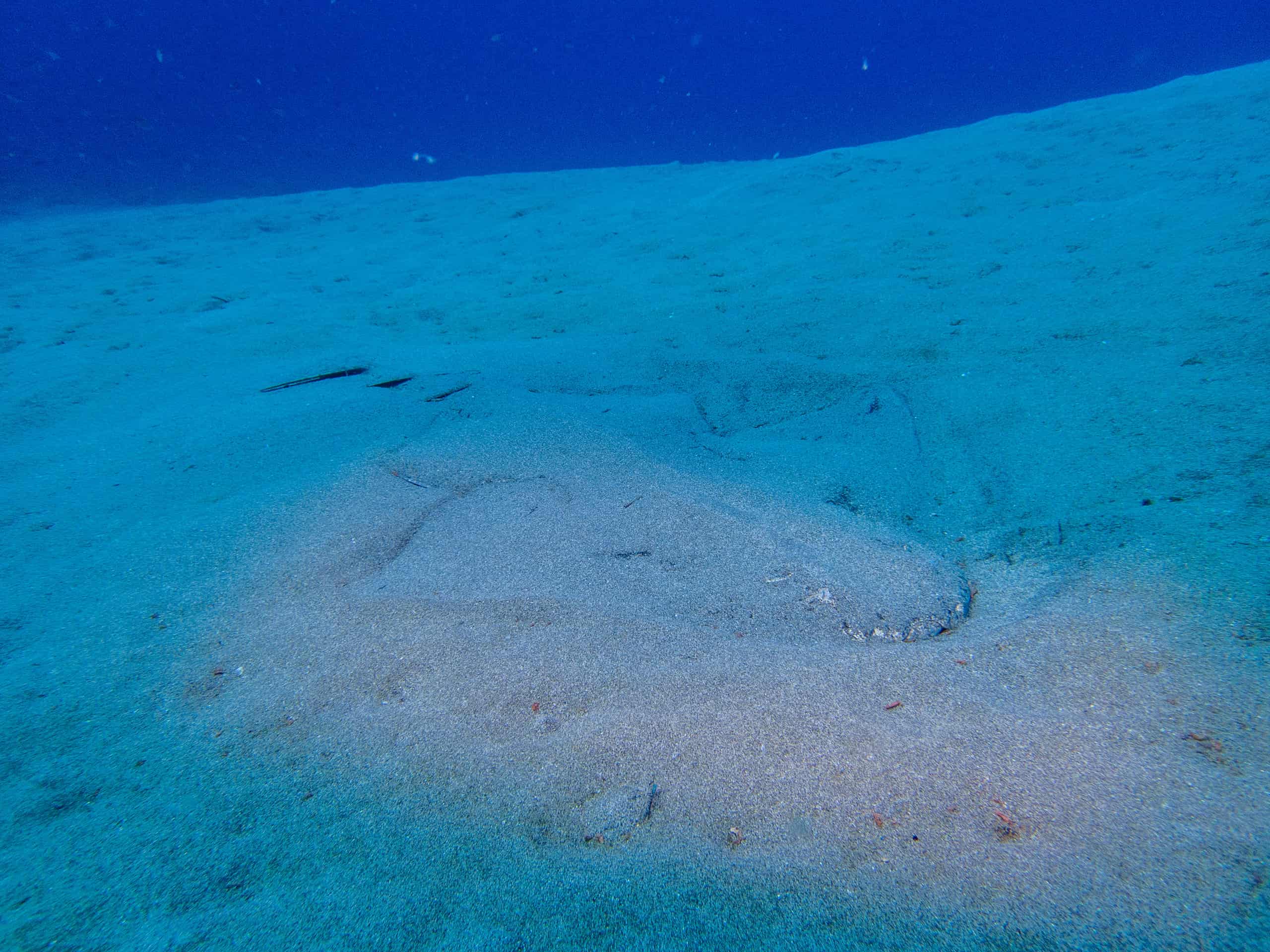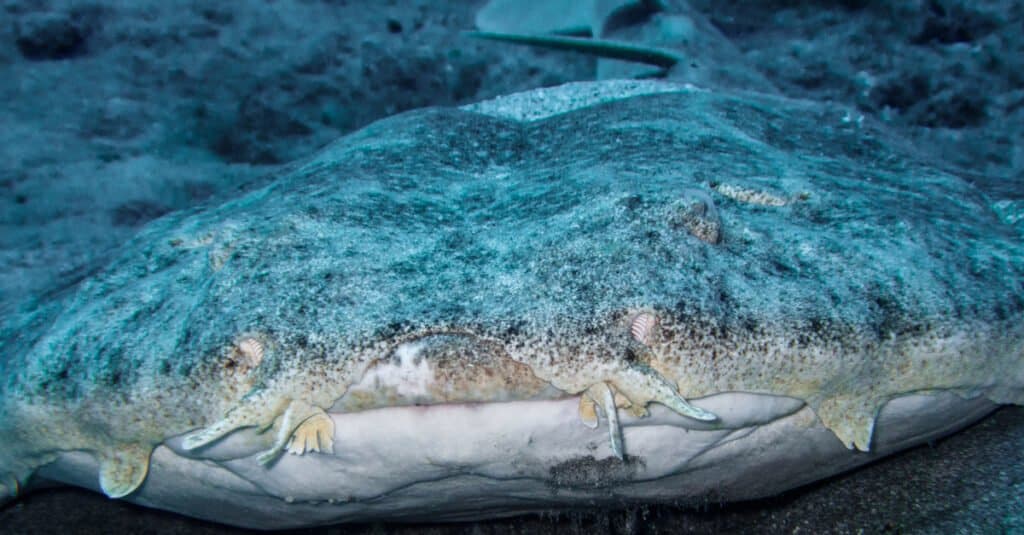Continue reading for our analysis...

When most of us think of sharks we picture ferocious creatures with huge teeth pursuing prey at great speeds. That, however, is not the complete picture. In this unique clip, you get to see a shark with an entirely different hunting strategy. Meet the angel shark!
This individual is waiting patiently at the bottom of the ocean waiting for prey to come to it. We see some unsuspecting fish casually swim across its back – they are completely oblivious to the fact that a predator is lurking below them. Even when the shark moves, they don’t seem to understand the danger they are in!
Where Do Angel Sharks Normally Live?
The scientific name for the Pacific angel shark is Squatina californica, but it is also called the ‘monk fish’ and ‘sand devil’. Its range is fairly limited – it is only found in the Eastern Pacific Ocean. You will spot it from Costa Rica to Southern Chile. Also, its range covers waters from Southeast Alaska to the Gulf of California, but it is not found south of here.
In terms of habitat, these sharks are usually spotted in shallow waters. They are seen at depths of 320 feet off the coast of California. In the Sea of Cortez, however, they are found as deep as 600 feet. As a bottom-dwelling (benthic) shark, you are most likely to spot them partially buried in sand or mud. Although, thanks to their camouflage, you may not spot them at all!
What Do Angel Sharks Normally Eat?

Angel sharks are ambush predators with big mouths!
©LuisMiguelEstevez/Shutterstock.com
Angel sharks are carnivores and feed on mainly bony fish such as croakers, flatfish, and sea basses. They also eat cephalopods, including squid and octopuses. However, they sometimes eat crustaceans and mollusks. Most of the time, they are solitary but are occasionally seen in groups. Whilst some migrate seasonally, others remain sedentary for years.
These guys spend their daylight hours waiting on the seafloor for their prey to wander past them. Special adaptions allow them to do this. Most sharks have to keep moving to get a constant flow of water across their gills so that they can ‘breathe’. Angel sharks, on the other hand, have little muscles that pump water past the gills. When a suitable target is detected, they move remarkably quickly to grab it in their mouth. At night, however, they use a different tactic. They switch to using sonic telemetry to detect physical activity. They are even clever enough to use ambush sites where they have been successful in the past!
Thank you for reading! Have some feedback for us? Contact the AZ Animals editorial team.







